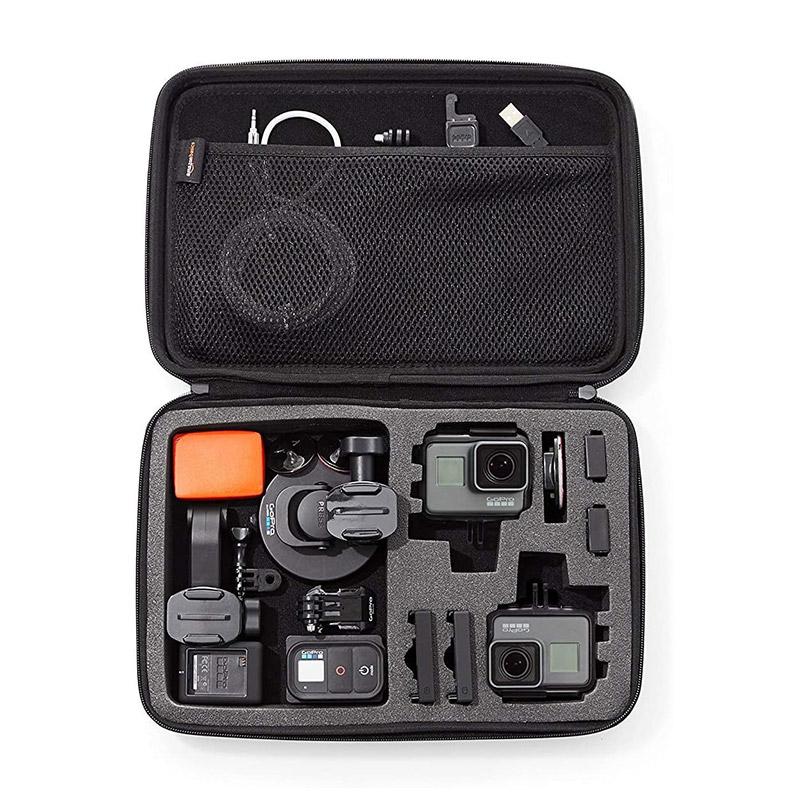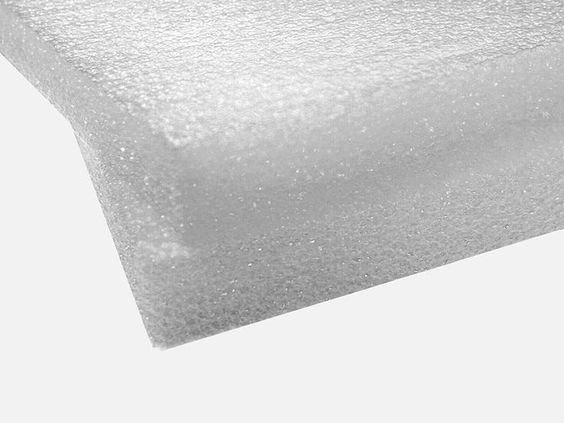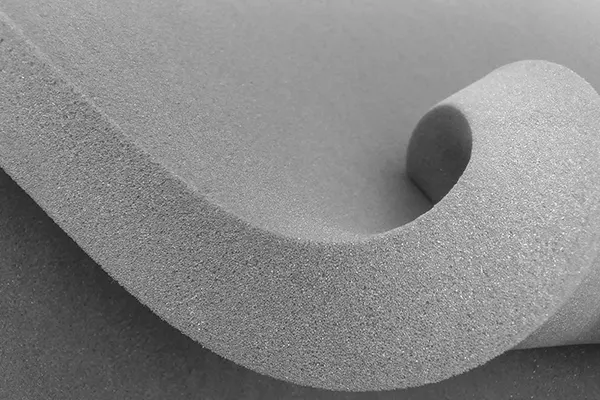Когда дело доходит до выбора правильного типа пены для ваших проектов, EVA FOAM и PE FOAM - это два популярных варианта, которые часто учитываются. Эти два материала имеют четкие характеристики, которые отличают их друг от друга, сделать их подходящими для разных приложений. В этой статье, Мы углубимся в различия между пеной EVA и пеной PE, чтобы помочь вам принять обоснованное решение для ваших конкретных потребностей.
Что такое пена Ева?

Ева пена, Короткий для этилен винилацетатной пены, это универсальный материал, который известен своей устойчивостью и долговечностью. Это пена с закрытыми клетками, которая предлагает амортизационные и амортизационные свойства, сделать его идеальным для широкого спектра приложений. Ева пена обычно используется в таких отраслях, как спортивное оборудование, упаковка, и создание из -за его легкой природы и простоты настройки.
Из чего сделано пена Ева?
Ева пена состоит из этилен и винилацетатные сополимеры, которые смешиваются вместе, чтобы создать материал с уникальными свойствами. Комбинация этих двух соединений приводит к мягкой пене, гибкий, и устойчив к трещинах и слезам. Ева пена может быть изготовлена в различных плотностях и толщинах, чтобы удовлетворить различные потребности и требования.
Для чего используется пена EVA?

Eva Foam - это очень универсальный материал, который находит приложения в широком спектре отраслей промышленности. Это обычно используется в производстве спортивные коврики, йога блоки, Невещание обуви, и защитная прокладка. Кроме того, Ева пена используется в Упаковка для защиты хрупких предметов Во время доставки и обработки. Его легкие и амортизирующие свойства делают его популярным выбором для Ева пенопластовая корпус.
- Спортивные коврики
- Йога блоки
- Невещание обуви
- Шлемные лайнеры, коленные прокладки, и локоть
- Косплей костюмы, модель, и DIY Home Decor
- Детские игрушки, головоломки, и игры
- Пользовательские вставки для защиты тонких предметов
- Ортопедические опоры, Протезная промежутка, и подушки для инвалидных колясок
- Звукоизоляционные панели
- Плавучие коврики
Что такое пена PE?

На пене, или полиэтиленовая пена, это еще один тип пенопластового материала, который широко используется в различных отраслях промышленности. PE Foam-это пена с закрытыми клетками, которая известна своей мягкостью и гибкостью. Это устойчиво к химическим веществам и влаге, сделать его идеальным для применений, которые требуют водостойкости и долговечности. ПЭ -пена обычно используется в упаковка, изоляция, и амортизирующие приложения.
Из чего изготовлена пена PE?
Пена PE сделана из Полиэтилен, термопластичный материал, который известен своей жесткостью и гибкостью. Полиэтиленовая пена создается путем вытягивания полимера через серию процессов с образованием пенопласта с равномерной клеточной структурой. Полученная пена легкая, мягкий, и устойчивый, сделать его подходящим для широкого спектра приложений.
Для чего используется пена PE?

PE FOAM - это универсальный материал, который используется в различных отраслях промышленности для разных целей. Это обычно используется в упаковка Для обеспечения амортизации и защиты деликатных предметов во время транспортировки. ПЭ -пена также используется в Строительная отрасль для изоляции Из -за его тепловых и акустических свойств. Кроме того, Пена PE используется в Автомобильная промышленность для звукоизоляции и демпфирования вибрации.
- Упаковочные вставки
- Утепления листов
- Амортизирующий материал
- Автомобильная звуковая изоляция
- Изоляция трубы
- Изоляция воздуховода HVAC
- Флотационные устройства
- Защитная упаковка
- Подставка для пола
- Медицинские брекеты
Ева против. На пене, В чем разница?
При сравнении пены EVA и пена PE, Есть несколько ключевых различий, которые выделяют их.
| Свойство | Ева пена | На пене |
| Долговечность | Превосходное сопротивление трещинах и слезам | Подвержен проколам и слезам |
| Гибкость | Высокая гибкость и мягкость | Гибкий, но немного менее податливый |
| Водонепроницаемость | Умеренно устойчивый к влаге | Устойчив к влаге и не поглощает воду |
| Шоковой поглощение | Отличные свойства поглощения шока | Хорошие возможности поглощения шока |
| Температурная стойкость | Может противостоять температуре от -20 ° C до 70 ° C | Может противостоять широкому диапазону температур |
| Химическая стойкость | Умеренно устойчива к химическим веществам | Отличная устойчивость к кислотам и щелочкам |
| Расходы | Немного дороже | Более доступный вариант |
Сравнение долговечности
С точки зрения долговечности, И пена Eva, и пена PE - это устойчивые материалы, которые могут противостоять регулярному износу. Однако, Ева пена известна своей превосходной сопротивлением трещинах и слезам, сделать его более долговечным вариантом для долгосрочного использования. На пене, с другой стороны, может быть подвержен проколам и слезам из -за его более мягкой природы.
Тест на гибкость
С точки зрения гибкости, Ева пена известна своей высокой гибкостью и мягкостью, Облегчение формирования и формирования в различных формах. На пене, в то время как также гибкий, может быть немного менее податливым, чем пена Eva, сделать его лучше подходящим для приложений, которые требуют более жесткого материала. Обе пены можно легко обрезать, наклонный, и формируется для соответствия конкретным требованиям.
Водонепроницаемость
Когда дело доходит до водонепроницаемости, PE FOAM имеет преимущество над пеной EVA из-за своей замкнутой структуры и гидрофобных свойств. ПЭ -пена устойчива к влаге и не поглощает воду, сделать его идеальным выбором для применений, которые требуют защиты от повреждения воды. Ева пена, в некоторой степени водонепроницаемые в некоторой степени, может поглощать влагу со временем, Сделать его менее подходящим для длительного воздействия влажных условий.
Шоковой поглощение
Eva Foam известна своими превосходными свойствами поглощения шока, сделать его популярным выбором для приложений, которые требуют воздействия сопротивления. Структура с замкнутыми клетками пены EVA позволяет ей сжимать и отскочить назад, Поглощение шока и защита тонких предметов от повреждений. PE FOAM также предлагает хорошие возможности поглощения шока, но может быть не так эффективно, как пена Ева в сильных ситуациях.
Температурная стойкость
И пена EVA, и пена PE демонстрирует хорошую температурную стойкость, выдерживая широкий спектр температур, не теряя их формы или свойства. Ева пена банка выдерживает температуры в диапазоне от -20 ° C до 70 ° C, сделать его подходящим для применения на открытом воздухе и экстремальных погодных условий. ПЭ -пена имеет аналогичный диапазон температуры, Сделать его универсальным материалом для применений, которые требуют тепловой стабильности.
Химическая стойкость
PE FOAM известна своей превосходной химической стойкостью, Сделать его идеальным для применений, которые включают воздействие суровых химических веществ и растворителей. ПЭ -пена устойчива к кислотам, щелочи, и другие коррозионные вещества, Сделать его надежным выбором для хранения и транспортировки химического вещества. Ева пена, в то время как умеренно устойчива к химическим веществам, может быть подвержен деградации при воздействии определенных растворителей и кислот.
Сравнение затрат
С точки зрения стоимости, ПЭская пена, как правило, более доступна, чем пена EVA из -за различий в производственных процессах и затратах на сырье. PE Foam является экономически эффективным вариантом для приложений, которые требуют амортизации и изоляции без необходимости высокого воздействия. Ева пена, хотя немного дороже, предлагает превосходное поглощение шока и долговечность, Сделать его предпочтительным выбором для приложений, которые требуют высокопроизводительных пенопластовых материалов.
Ева пена против. На пене: Что лучше?

Выбор между пеной EVA и пеной PE в конечном итоге зависит от конкретных потребностей вашего проекта. Если вам требуется превосходное поглощение шока и амортизация для высоких действий., Ева пена может быть лучшим вариантом. Однако, Если водостойкость и химическая стойкость являются ключевыми соображениями для вашего проекта, PE FOAM может быть предпочтительным выбором.
Коклюция
В заключение, Ева пена и пена PE - это два универсальных материала, которые предлагают уникальные свойства и преимущества для широкого спектра приложений. Ева пена ценится за его превосходное поглощение шока и амортизационные свойства, Сделать его идеальным для спортивного оборудования, Защитная заполнение, и создание приложений. На пене, с другой стороны, известен своей водостойкостью и химической стойкостью, сделать его подходящим для упаковки, изоляция, и амортизирующие приложения. При выборе между пеной EVA и пеной PE, Рассмотрим конкретные требования вашего проекта и выберите материал из пены, который наилучшим образом соответствует вашим потребностям.
















